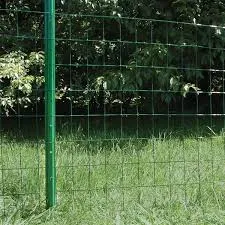The Versatility and Benefits of Gabion Structures
In recent years, gabion structures have gained significant popularity in various fields, from civil engineering to landscaping. These wire mesh containers, often filled with rock, concrete, or other materials, offer unique advantages that make them an excellent choice for a wide range of applications. This article delves into the characteristics, benefits, and versatile uses of gabion structures.
What are Gabions?
Gabions are rectangular or cylindrical wire mesh cages filled with stones, gravel, or other materials. Initially used for military purposes to create fortifications, they have evolved into essential components in modern construction and landscaping. The mesh is typically made of galvanized steel or corrosion-resistant materials, ensuring durability and longevity. The filled cages are not only functional but can also enhance the aesthetic appeal of various environments.
Engineering Applications
In civil engineering, gabions serve critical functions in erosion control, retaining walls, and flood protection. Their porous nature allows water to drain through while providing stability to soil structures. For example, when used as retaining walls, gabions help prevent soil erosion on steep slopes by absorbing and dissipating the energy of flowing water. Their adaptability allows engineers to create tailored solutions for specific geographic and environmental conditions.
Environmental Benefits
Gabion structures promote sustainability through their use of natural materials. The stones or aggregates used to fill gabions can often be sourced locally, reducing transportation costs and environmental impact. Additionally, the permeable design of gabions allows for natural water drainage, aiding in groundwater recharge and reducing the risk of flooding in adjacent areas. This feature is increasingly important in our climate-challenged world, where stormwater management is a growing concern.
gabion pro

Aesthetic Appeal
Beyond their functional uses, gabions can also enhance the visual appeal of both urban and rural landscapes. When strategically placed within architectural designs or gardens, they can create stunning features that blend seamlessly with natural surroundings. Options for fill material can vary, allowing for creativity in design—smooth river stones, rustic boulders, or even recycled concrete can all contribute to unique aesthetics. Landscape architects frequently utilize gabions to craft seating areas, planters, and decorative walls.
Cost-Effectiveness
Another significant advantage of gabion structures is their cost-effectiveness. The materials used for filling are often abundant and inexpensive, while the labor required for installation can be less intensive compared to traditional methods. Gabions can be built quickly, saving both time and money. This efficiency makes them an attractive option for developers and municipalities looking to maximize budgetary resources.
Durability and Maintenance
Gabions are incredibly durable, capable of withstanding harsh weather conditions, including heavy rain, snow, and high winds. The metal mesh is designed to resist corrosion, and the stone filling provides weight that helps stabilize structures. Maintenance requirements are minimal; typically, a periodic inspection for integrity is sufficient. If any damage does occur, individual gabions can be repaired or replaced without needing to dismantle larger structures.
Conclusion
Gabion structures provide a multifaceted solution to many of today’s engineering, environmental, and aesthetic challenges. Their versatility, combined with cost-effectiveness and durability, positions them as a valuable asset in modern construction and landscaping. Whether utilized for flood control, erosion protection, or simply as an attractive design feature, gabions are undoubtedly a testament to innovative engineering. As the industry continues to evolve, the potential applications and benefits of gabion structures will undoubtedly expand, making them a key component in sustainable development and landscape architecture. With thoughtful design and implementation, gabions can form a bridge between functionality and beauty in our ever-evolving built environment.
















